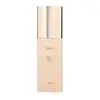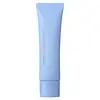What's inside
What's inside
 Key Ingredients
Key Ingredients

 Benefits
Benefits

 Concerns
Concerns

 Ingredients Side-by-side
Ingredients Side-by-side

Water
Skin ConditioningTitanium Dioxide
Cosmetic ColorantPhenyl Trimethicone
Skin ConditioningEthylhexyl Methoxycinnamate
UV AbsorberGlycerin
HumectantButylene Glycol
HumectantDicaprylyl Carbonate
EmollientZinc Oxide
Cosmetic ColorantCyclopentasiloxane
EmollientButyloctyl Salicylate
Skin ConditioningPEG-10 Dimethicone
Skin ConditioningPhenylbenzimidazole Sulfonic Acid
UV AbsorberCyclohexasiloxane
EmollientDimethicone
EmollientNiacinamide
SmoothingTromethamine
BufferingChromium Hydroxide Green
Cetyl Dimethicone
EmollientDiisostearyl Malate
EmollientLauryl PEG-8 Dimethicone
Octyldodecanol
EmollientSodium Chloride
MaskingDisteardimonium Hectorite
StabilisingPolymethylsilsesquioxane
Synthetic Beeswax
Emulsion StabilisingSilica
AbrasiveFerric Chloride
AstringentAluminum Hydroxide
EmollientLauroyl Lysine
Skin ConditioningTriethoxycaprylylsilane
Sodium Benzoate
MaskingHydrogen Dimethicone
Parfum
MaskingCuprous Oxide
Skin ConditioningPotassium Sorbate
PreservativeXanthan Gum
EmulsifyingDisodium EDTA
Ethylhexylglycerin
Skin ConditioningAdenosine
Skin ConditioningHydrangea Macrophylla Leaf Extract
Skin Conditioning1,2-Hexanediol
Skin ConditioningHydrolyzed Soy Flour
Skin ConditioningJuniperus Chinensis Xylem Extract
Skin ConditioningAngelica Tenuissima Root Extract
Skin ConditioningArtemisia Capillaris Extract
Chamaecyparis Obtusa Leaf Extract
Skin ConditioningCryptomeria Japonica Leaf Extract
HumectantCupressus Sempervirens Leaf Extract
PerfumingChrysanthemum Zawadskii Extract
Skin ConditioningPinus Palustris Leaf Extract
TonicThuja Orientalis Extract
AntimicrobialTocopherol
AntioxidantCaprylyl Glycol
EmollientWater, Titanium Dioxide, Phenyl Trimethicone, Ethylhexyl Methoxycinnamate, Glycerin, Butylene Glycol, Dicaprylyl Carbonate, Zinc Oxide, Cyclopentasiloxane, Butyloctyl Salicylate, PEG-10 Dimethicone, Phenylbenzimidazole Sulfonic Acid, Cyclohexasiloxane, Dimethicone, Niacinamide, Tromethamine, Chromium Hydroxide Green, Cetyl Dimethicone, Diisostearyl Malate, Lauryl PEG-8 Dimethicone, Octyldodecanol, Sodium Chloride, Disteardimonium Hectorite, Polymethylsilsesquioxane, Synthetic Beeswax, Silica, Ferric Chloride, Aluminum Hydroxide, Lauroyl Lysine, Triethoxycaprylylsilane, Sodium Benzoate, Hydrogen Dimethicone, Parfum, Cuprous Oxide, Potassium Sorbate, Xanthan Gum, Disodium EDTA, Ethylhexylglycerin, Adenosine, Hydrangea Macrophylla Leaf Extract, 1,2-Hexanediol, Hydrolyzed Soy Flour, Juniperus Chinensis Xylem Extract, Angelica Tenuissima Root Extract, Artemisia Capillaris Extract, Chamaecyparis Obtusa Leaf Extract, Cryptomeria Japonica Leaf Extract, Cupressus Sempervirens Leaf Extract, Chrysanthemum Zawadskii Extract, Pinus Palustris Leaf Extract, Thuja Orientalis Extract, Tocopherol, Caprylyl Glycol
Cyclopentasiloxane
EmollientGlycerin
HumectantPropanediol
SolventDimethicone/Vinyl Dimethicone Crosspolymer
Skin ConditioningWater
Skin ConditioningDimethicone
EmollientSodium Hyaluronate
HumectantSodium Acrylate/Sodium Acryloyldimethyl Taurate Copolymer
Emulsion StabilisingFomes Officinalis Extract
Skin ProtectingCitrus Limon Peel Oil
MaskingCitrus Aurantium Bergamia Peel Oil
Citrus Aurantium Dulcis Peel Oil
MaskingCitrus Aurantifolia Oil
CleansingPinus Sylvestris Leaf Oil
MaskingEucalyptus Globulus Leaf Oil
PerfumingDimethylimidazolidinone Rice Starch
AbsorbentBetula Platyphylla Japonica Juice
Skin ConditioningRosa Damascena Flower Water
MaskingZea Mays Starch
AbsorbentCamellia Sinensis Leaf Extract
AntimicrobialAspalathus Linearis Leaf Extract
Skin ConditioningRosmarinus Officinalis Leaf Extract
AntimicrobialJasminum Officinale Extract
MaskingMentha Piperita Leaf Extract
Skin ConditioningIsohexadecane
EmollientSilica
AbrasiveBetaine
HumectantPolysorbate 80
EmulsifyingSorbitan Oleate
EmulsifyingTriethoxycaprylylsilane
Disodium EDTA
Phenoxyethanol
PreservativeChlorphenesin
AntimicrobialCaprylyl Glycol
EmollientEthylhexylglycerin
Skin ConditioningParfum
MaskingLimonene
PerfumingLinalool
PerfumingButylphenyl Methylpropional
PerfumingCyclopentasiloxane, Glycerin, Propanediol, Dimethicone/Vinyl Dimethicone Crosspolymer, Water, Dimethicone, Sodium Hyaluronate, Sodium Acrylate/Sodium Acryloyldimethyl Taurate Copolymer, Fomes Officinalis Extract, Citrus Limon Peel Oil, Citrus Aurantium Bergamia Peel Oil, Citrus Aurantium Dulcis Peel Oil, Citrus Aurantifolia Oil, Pinus Sylvestris Leaf Oil, Eucalyptus Globulus Leaf Oil, Dimethylimidazolidinone Rice Starch, Betula Platyphylla Japonica Juice, Rosa Damascena Flower Water, Zea Mays Starch, Camellia Sinensis Leaf Extract, Aspalathus Linearis Leaf Extract, Rosmarinus Officinalis Leaf Extract, Jasminum Officinale Extract, Mentha Piperita Leaf Extract, Isohexadecane, Silica, Betaine, Polysorbate 80, Sorbitan Oleate, Triethoxycaprylylsilane, Disodium EDTA, Phenoxyethanol, Chlorphenesin, Caprylyl Glycol, Ethylhexylglycerin, Parfum, Limonene, Linalool, Butylphenyl Methylpropional
Alternatives
Ingredients Explained
These ingredients are found in both products.
Ingredients higher up in an ingredient list are typically present in a larger amount.
Caprylyl Glycol is a humectant and emollient, meaning it attracts and preserves moisture.
It is a common ingredient in many products, especially those designed to hydrate skin. The primary benefits are retaining moisture, skin softening, and promoting a healthy skin barrier.
Though Caprylyl Glycol is an alcohol derived from fatty acids, it is not the kind that can dry out skin.
This ingredient is also used as a preservative to extend the life of products. It has slight antimicrobial properties.
Learn more about Caprylyl GlycolCyclopentasiloxane, or D5, is a silicone used to improve texture of products and trap moisture.
D5 is considered lightweight and volatile. Volatile means it evaporates quickly after application. Once evaporated, D5 leaves a thin barrier that helps keep skin hydrated.
It is also an emollient. Emollients help soften the skin and prevent water loss. Silicones create a silky texture in products. D5 helps other ingredients become more spreadable.
Studies show D5 is safe to use in skincare products. We recommend speaking with a skincare professional if you have concerns.
Learn more about CyclopentasiloxaneDimethicone is a type of synthetic silicone created from natural materials such as quartz.
What it does:
Dimethicone comes in different viscosities:
Depending on the viscosity, dimethicone has different properties.
Ingredients lists don't always show which type is used, so we recommend reaching out to the brand if you have questions about the viscosity.
This ingredient is unlikely to cause irritation because it does not get absorbed into skin. However, people with silicone allergies should be careful about using this ingredient.
Note: Dimethicone may contribute to pilling. This is because it is not oil or water soluble, so pilling may occur when layered with products. When mixed with heavy oils in a formula, the outcome is also quite greasy.
Learn more about DimethiconeDisodium EDTA plays a role in making products more stable by aiding other preservatives.
It is a chelating agent, meaning it neutralizes metal ions that may be found in a product.
Disodium EDTA is a salt of edetic acid and is found to be safe in cosmetic ingredients.
Learn more about Disodium EDTAEthylhexylglycerin (we can't pronounce this either) is commonly used as a preservative and skin softener. It is derived from glyceryl.
You might see Ethylhexylglycerin often paired with other preservatives such as phenoxyethanol. Ethylhexylglycerin has been found to increase the effectiveness of these other preservatives.
Glycerin is already naturally found in your skin. It helps moisturize and protect your skin.
A study from 2016 found glycerin to be more effective as a humectant than AHAs and hyaluronic acid.
As a humectant, it helps the skin stay hydrated by pulling moisture to your skin. The low molecular weight of glycerin allows it to pull moisture into the deeper layers of your skin.
Hydrated skin improves your skin barrier; Your skin barrier helps protect against irritants and bacteria.
Glycerin has also been found to have antimicrobial and antiviral properties. Due to these properties, glycerin is often used in wound and burn treatments.
In cosmetics, glycerin is usually derived from plants such as soybean or palm. However, it can also be sourced from animals, such as tallow or animal fat.
This ingredient is organic, colorless, odorless, and non-toxic.
Glycerin is the name for this ingredient in American English. British English uses Glycerol/Glycerine.
Learn more about GlycerinParfum is a catch-all term for an ingredient or more that is used to give a scent to products.
Also called "fragrance", this ingredient can be a blend of hundreds of chemicals or plant oils. This means every product with "fragrance" or "parfum" in the ingredients list is a different mixture.
For instance, Habanolide is a proprietary trade name for a specific aroma chemical. When used as a fragrance ingredient in cosmetics, most aroma chemicals fall under the broad labeling category of “FRAGRANCE” or “PARFUM” according to EU and US regulations.
The term 'parfum' or 'fragrance' is not regulated in many countries. In many cases, it is up to the brand to define this term.
For instance, many brands choose to label themselves as "fragrance-free" because they are not using synthetic fragrances. However, their products may still contain ingredients such as essential oils that are considered a fragrance by INCI standards.
One example is Calendula flower extract. Calendula is an essential oil that still imparts a scent or 'fragrance'.
Depending on the blend, the ingredients in the mixture can cause allergies and sensitivities on the skin. Some ingredients that are known EU allergens include linalool and citronellol.
Parfum can also be used to mask or cover an unpleasant scent.
The bottom line is: not all fragrances/parfum/ingredients are created equally. If you are worried about fragrances, we recommend taking a closer look at an ingredient. And of course, we always recommend speaking with a professional.
Learn more about ParfumSilica, also known as silicon dioxide, is a naturally occurring mineral. It is used as a fine, spherical, and porous powder in cosmetics.
Though it has exfoliant properties, the function of silica varies depending on the product.
The unique structure of silica enhances the spreadability and adds smoothness, making it a great texture enhancer.
It is also used as an active carrier, emulsifier, and mattifier due to its ability to absorb excess oil.
In some products, tiny microneedles called spicules are made from silica or hydrolyzed sponge. When you rub them in, they lightly polish away dead skin layers and enhance the penetration of active ingredients.
Learn more about SilicaTriethoxycaprylylsilane is a silicone used to bind and stabilize ingredients.
As an emulsifier, it helps prevent ingredients from separating. This can help elongate the shelf life of products.
Triethoxycaprylylsilane is often used to coat mineral sunscreens ingredients to help give a better feel. It also helps reduce oxidative stress in sunscreens.
Learn more about TriethoxycaprylylsilaneWater. It's the most common cosmetic ingredient of all. You'll usually see it at the top of ingredient lists, meaning that it makes up the largest part of the product.
So why is it so popular? Water most often acts as a solvent - this means that it helps dissolve other ingredients into the formulation.
You'll also recognize water as that liquid we all need to stay alive. If you see this, drink a glass of water. Stay hydrated!
Learn more about Water